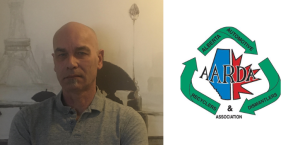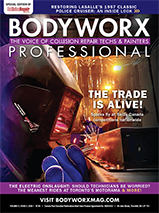By CAR Staff
Toronto, Ontario — February 12, 2014 — The Ontario government’s Ministry of Environment (MOE) has released a proposal calling for the implementation of standards concerning the processing of end-of-life vehicles (ELV).
The proposed amendments to Regulation 347 under the Environmental Protection Act would standardize the necessary conditions to legally process to-be-retired vehicles so as to lessen the totality of the process’ environmental footprint. The government report states that approximately 600,000 vehicles are retired each year in Ontario, creating in excess of 150,000 tonnes of vehicle waste–fuels, fluids, oil filters, mercury parts, tires and batteries–destined for the landfill.
“Action needs to be taken, however to ensure that this diversion occurs in a manner that protects the environment,” says the MOE in the government report. “The government recognizes we need to ensure that when wastes are diverted, they are diverted safely and sustainably.”
Ontario’s automotive industry is a central figure in the management of potential enivronment impacts as it relates to recycling procedures, vehicle processing and ultimately their disposal–this includes dismantling, depolluting, crushing and the shredding of ELVs. These are vehicles considered to be inoperable “derelict” vehicles that have no market value as a means of transportation, or has a market value less than the cost of repairs to put it back into operation.
The negative enivronmental emissions associated with end-of-life processing concerning waste, air and sewage-related affects respectively have the potential to cause environmentally harmful leaks and spills that may contaiminate the soil, surface and ground water, and the air we breathe. Air quality is especially concerning, where the processing of diesel-powered equipment that results in the emission of metal fumes and organic compounds, combustion by-products, oxides and nitrogens come into play. Additional contaminants may affect the environment during parts washing operations where water, or stormwater, may leak into sewage systems; process wastewater and stormwater may carry excess oil, grease, fluids, fuels, and detergents emanating from dirty, leaking or oily machinary.
Looking back at the present definition of what an ELV constitutes, the proposed changes would replace the phrase “derelict motor vehicle” with “end-of-life vehicle,” in combination with all other references to “derelict motor vehicle,” such as changing the basic recycling terminology of recycling sites to “end-of-life vehicle site.” The move by the MOE would adopt the language used within the auto recycling industry to official government regulations to limit confusion between government law and industry standards and references. Secondly, the revised definition is complemented by narrowed criteria for ELV exemptions to sites that at any time have no more than 10 ELVs on-site, receive no more than two ELVs a year, and do not flatten, crush, shear or shred ELVs. The revised exemption is intended to target smaller sites that have a small number of ELVs.
Further, in conjunction with the Vehicle Dismantling and Recycling Industry Environmental Planning Regulation and the Canadian Auto Recyclers’ Environmental Code (CAREC), the list of regulated ELV contaminants would be further complemented by a depollution notice containing the business name and address of the ELV processing site, the Environmental Activity and Sector Registry Number or Environmental Compliance Approval number, the date of ELV processing at the facility and the vehicle identification numbers of all ELVs that are processed. Eligibility would further hinge on meeting criteria focused on expanding waste management operations, and the replacement of any plant structure, equipment or mechanism that discharges harmful contaminants into the environment. This is to ensure that all ELV facilities are in compliance with industry standards and government regulations.
These regulations would also work towards limiting who can legally process ELVs, citing that auto recyclers must not engage in depositing waste into the land nor thermal processing treatment. It would also ensure that facilities only receive and handle ELV vehicles and accompanying parts, metals and a variety of waste appliances. Licensed facilities would also be prohibited from handling any materials containing polychlorinated biphenyl (PCB) waste, radioactive waste or biomedical waste, and must not partake in vehicle shredding or shearing. Facilities must also regulate the location and duration of torching or lancing performed on-site, and safely locate and demarcate crushing equipment areas.
Chief among the proposed operating requirements are specific protocols limiting where ELV processing can occur, the necessity for crushing equipment to be able to capture excess liquids and also prevents them from escaping, all crushed ELVs must be stored on an impermeable surface with the same applying to wet vehicles, that each fluid released during disposal be collected and properly stored and that each tool or item used to clean up excess waste is properly stored. When storing waste products on-site, facilities must notify the MOE after 90 days of storage for any one contaminant, no contaminant can be stored longer than 24 months, all batteries, mercury-based waste and lead-based products must be sufficiently stored and covered, and each container housing a specific material must be clearly labelled to identify the contents.
To further ensure compliance, all storage areas must be inspected weekly, and management must employ safe practice and ensure all personnel are trained as it relates to spill management and the employment of an action plan should a spill occur on-site. All companies must maintain up-to-date documents and records detailing their own compliance and that of employees, notably inspection, maintenance and repair records for any equipment housed inside the facility.
The transition toward these new processing standards would not be immediate, but would necessitate the gradual and eventual 100 percent compliance with government regulations to bring the industry fully into a focused standard, best practice.
“It is recognized that existing ELV processing facilities would need time to transition to the new regime, including being subject to new requirements and in some cases modify their facilities to comply with the proposed requirements,” the report states. “Timing would be dependent on the date that regulatory changes are approved, should the proposal move forward. It is important to note that this phased implementation allows time for making the sector aware of the changes (first 3 months), to undertake the online registration process (3-6 months), and to make the facility and operational changes needed to comply with the new standards (to 18 months).”
To read the MOE report on ELV processing standards, please visit EBR.gov.on.ca.






















